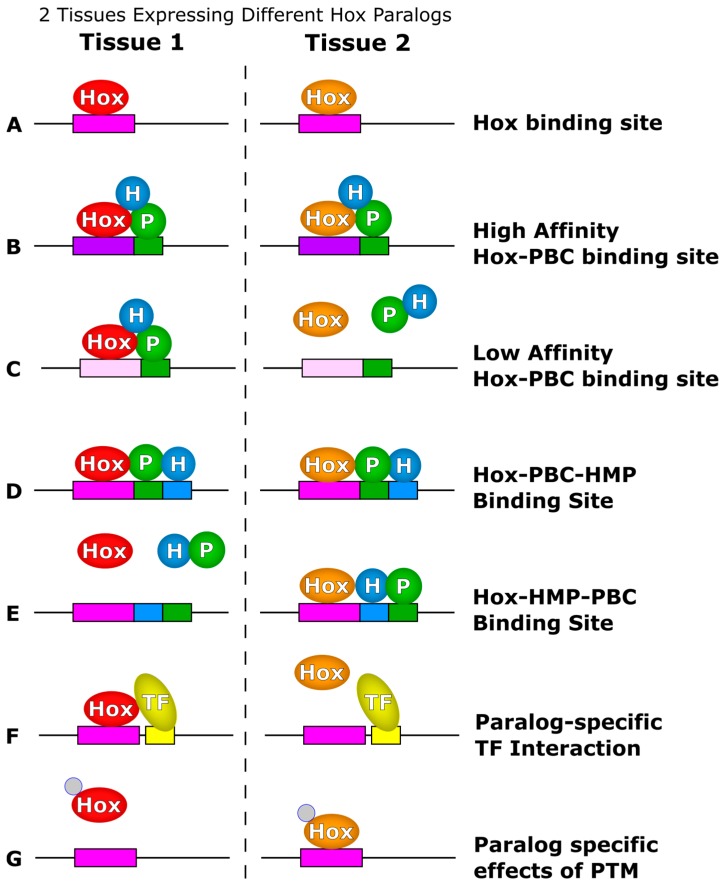Figure 2.
Summary of the mechanisms of Hox paralog specificity. (A) A single Hox site is unlikely to differentiate between two different Hox paralogs; (B,C) Low-affinity Hox-PBC binding sites are more likely to differentiate between Hox paralogs than high affinity Hox-PBC binding sites [23,41]; (D,E) All Hox paralogs can typically bind adjacent Hox-PBC sites, but adjacent Hox-HMP sites have a preference for posterior Hox paralogs [26,44,45]; (F) Interactions with a nearby binding site for another TF can cause a CRM to be paralog specific [46,47]; (G) The same post-translational modifications (gray circle) can affect paralogous Hox proteins differently [48,49,50,51]. “P” (PBC protein) and “H” (HMP protein).

